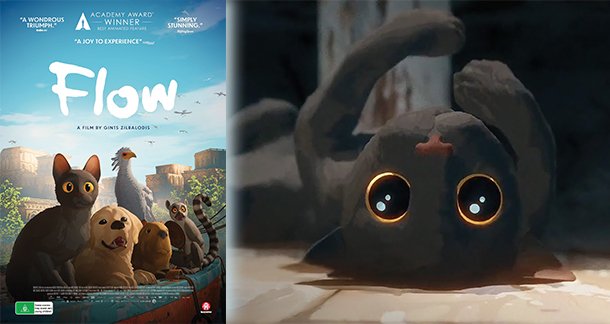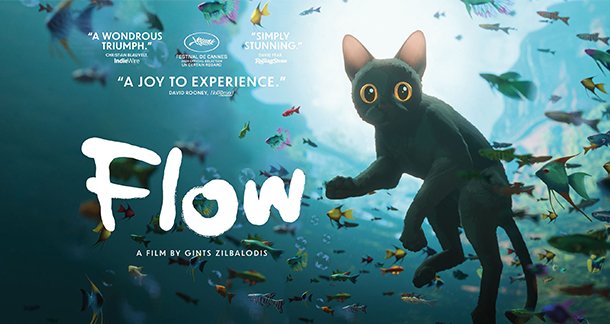Animated stories on text and film are being consumed over and over again in the mainstream. What makes us feel so drawn to them? For most of us, it is the love for animals. Each time we see our favorite animal telling its own story, it hits close to home and reality.
This time, I chose to watch the film Flow, which follows the journey of a black cat and other animals. It was recommended by my son, Revant, who once had a black cat as a pet. Unfortunately, the kitten could not survive in the harsh world filled with overpowering dangers. The agony of losing it and the memories of that little black kitten still linger in our hearts.
If you haven’t seen Flow yet, it’s a 2024 animated film directed by Gints Zilbalodis. The original Latvian title is Straume, and it is a Latvian, French, and Belgian co-production. The film tells a simple yet profound story about a black cat lost in a world devoid of humans, where rising water levels caused by global environmental degradation threaten all life. The cat embarks on a series of adventures, eventually finding companionship with other stray animals and a bird aboard a boat drifting through unknown terrains.
For those familiar with the mannerisms of cats and who share a love for them, the film beautifully captures their solitary nature as the cat wanders, explores new places, and seeks cozy spots to curl up in. It also highlights the unique dynamic between cats and dogs—where a cat, often aloof and self-sufficient, can still form a bond with a more sociable canine companion.
The title Flow is fitting, as the story unfolds fluidly, much like the rising waters that continuously threaten the animals’ survival.
What I found special about Flow was that there were no spoken words or any animated or dubbed human voices. The music was beautiful and perfectly complemented the story, enhancing the emotions in just the right way. At first, I wondered why there was no human voice, as in other animated films I’ve watched. But soon, the absence of humans felt natural and even comforting.

Most animals communicate nonverbally, and as pet lovers, we instinctively understand everything they are trying to express. We know when they are scared, playful, happy, or mischievous—the understanding comes naturally. It is a bond between us and our pets, an unspoken connection that doesn’t require words.
Just like in the film, I have seen my own cat running when chased by dogs, feeling frightened when cornered on a high wall, being bullied by other animals, stealing food right from under a dog’s nose, finding a safe space to curl up and rest, and choosing its own friends. Watching all of this unfold on screen felt like a reflection of our own nature. It reminded me that, just like these animals, we too are struggling to survive, facing fears of extinction, and adapting in our own ways to the changing world.
The 84-minute film took five and a half years to create using the free and open-source software Blender. It premiered at the 2024 Cannes Film Festival and went on to win the award for Best Animated Feature at the 97th Academy Awards. It was also the first film from Latvia to win and receive a nomination at the Oscars. Additionally, Flow won the Golden Globe Award for Best Animated Feature Film.
Reading more about the film online, I was happy to learn that its immense popularity led to the installation of a statue of the black cat in Riga, the largest city in Latvia. Originally placed outside the Freedom Monument, plans are underway to move it to the Town Hall Square. In addition, the Latvian national postal service released a limited-edition commemorative postage stamp dedicated to the film. This is not only a remarkable achievement for the film but also a tribute to black cats with their charming eyes—and to all of us who have loved, cared for, or protected cats of different colors and sizes, including stray cats.
The film’s director, Gints Zilbalodis, had previously made a short film titled Aqua during his high school days. It told the story of a cat overcoming its fear of water. This idea later evolved into Flow, where the cat gradually conquers its fear of water through survival instincts and collaboration with other animals. Zilbalodis, who grew up with two dogs as part of his family, channeled his lifelong love for animals into this beautifully crafted cinematic masterpiece.

